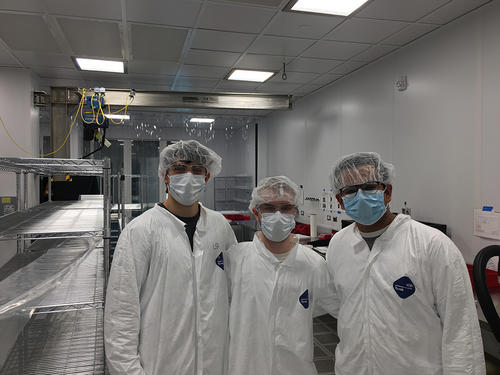
YaleNews
On March 14, a group of Yale students learned some stellar news — NASA selected their satellite to be launched into space. The announcement marks the first time a Yale undergraduate group will launch a spacecraft.
The team — which consists of members of the Yale Undergraduate Aerospace Association — received the launch grant through NASA’s CubeSat Launch Initiative competition. Over the course of four years, students designed a satellite called BLAST, which stands for Bouchet Low-Earth Alpha/Beta Space Telescope.
“The team created this project because we sensed that there were many students at Yale interested in aerospace engineering who wanted to gain some hands-on experience outside of the classroom. All of us at the aerospace association, just a few years after its founding, were also determined to go to outer space,” said Keshav Raghavan ‘21, current leader of the project, principal author of the application and current city editor for the News.
And to space the project’s satellite will go — in the summer of 2020, according to Lukas Baker ‘20, another member of the project.
Once BLAST, a cosmic ray detector, goes into orbit, it will collect data about particles traveling to earth from distant supernovae, explained Claire Laffan ‘21, another member of the team.
“First and foremost, I think BLAST is an incredible educational opportunity for everyone involved. Nothing compares to the experience gained while constructing a real spacefaring device,” Baker said.
Many other team members expressed similar sentiments, noting that the project has been highly enriching to their educations.
“Building a CubeSat and launching it into space is an ambition YUAA has had for quite a while. The founding members in 2011 had it as a goal in the back of their minds, but at that time, it was totally beyond our capabilities as a club,” said Jonathan Li ’20, co-president of YUAA.
The Yale team’s road to receiving the grant was not simple, according to several project members. One major challenge was the sheer complexity of building a spacefaring device, which required the collaboration of many students’ expertise. Roles spanned fields including physics research, computer programming and control systems development.
The project has been very time-intensive. Over the past four years, the team has met two or three times a week to collaborate and discuss research updates and design challenges, said Kathan Roberts ‘19, a former project leader.
The team has also grappled with the cost to build BLAST.
“There were times where we wondered if we had the ability and resources to complete the project, but we persevered, allowing us to reach the point where we’re at today with NASA granting us a launch opportunity,” said Li.
Typical CubeSat projects cost about $30,000, while Yale’s will cost around $13,000 to $20,000, according to Andrew Krzywosz ’20, co-president of YUAA.
Baker said that as the group’s satellite is “smaller than a loaf of bread,” it costs orders of magnitude less than large-scale satellites.
The work, so far, has culminated in a viable prototype that the team anticipates will be ready for launch in slightly over a year.
“Our experience with satellite technology will enable YUAA to tackle more ambitious projects in the future. It is a major addition to Yale’s institutional knowledge of aerospace,” said Roberts, who led the project during the 2017-18 school year and now serves as a senior advisor.
Jessica Pevner | jessica.pevner@yale.edu







